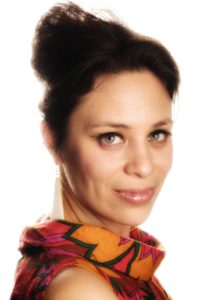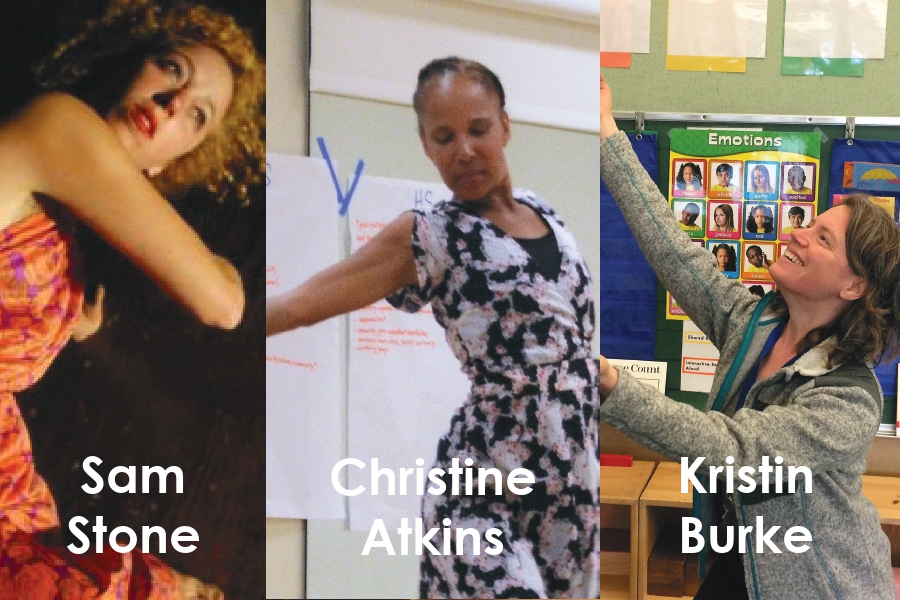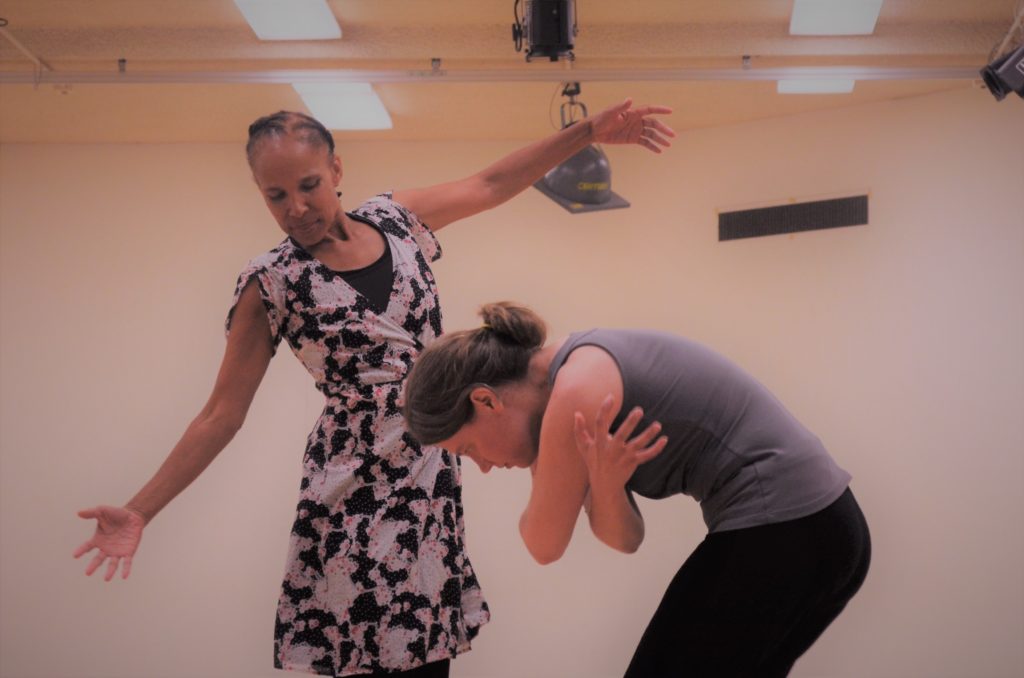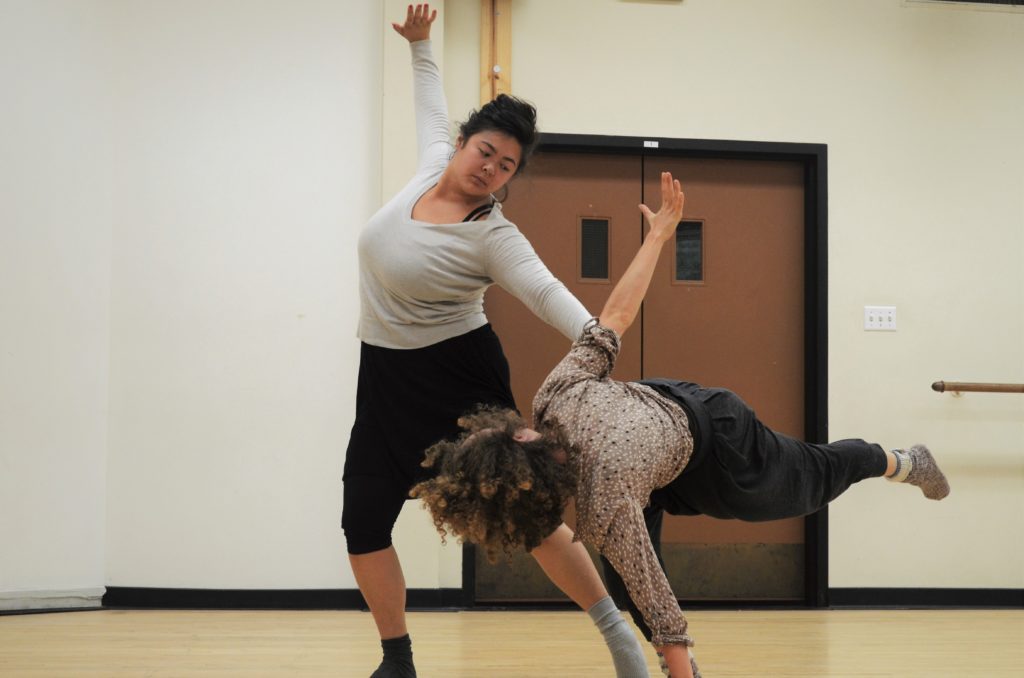
“We had an incredible Practitioner Exchange last night!” I tell my Luna colleagues, “I laughed, I even cried, we danced around, and the conversation just flowed.” I realize as I’m saying this, that I’m not fully describing the depth of the discussion, and that in fact, it sounds a bit trite. But my colleagues are curious, “Great! What did you learn?” I pause, mouth open, stumped. What did I learn? What am I actually learning from all these Exchanges? What’s in a conversation?
At Luna, we’ve been offering informal community conversations around dance teaching inquiry for over 10 years under various names and formats—Topic Tuesdays, Issues of Practice, Professional Learning Communities (PLCs). Practitioner Exchanges are the most recent iteration, and we chose the name to emphasize the back-and-forth nature of a conversation amongst peers. An Exchange is facilitated each month by a Summer Institute alum on a topic of their choice, ranging from Dance and Cultural Relevancy, to Dancers as Leaders, to Agency and Power in Early Childhood, and more. Like all participants, facilitators bring questions to the roundtable discussion to unpack together, sharing expertise and experience. Since March we’ve been offering 1-3 Exchanges each month via Zoom as a response to requests from our community; the topics, each addressing teaching dance from a distance, are scheduled as new questions emerge. Folks have tuned in from all over the States, Canada, Brazil, Mexico, Japan. Some pop in just once, many attend regularly.
In promoting Exchanges, I’ve highlighted them as opportunities for alumni to step into leadership roles as facilitators and advocates, and for supportive community-building amongst dance educators. But since Practitioner Exchanges went virtual, and I’ve been Zoom-hosting all of them, I’ve noticed that something more subtle, yet perhaps more profound is happening.
Classroom teacher and Exchange facilitator Kristen Burke said this: “Somehow there’s a container here, I don’t understand how this was created, but it feels like there’s a container where … you can just be in the mystery. And something comes out of it, even if I can’t articulate it. So I just feel grateful that there’s, there’s just the draw to keep coming back and be present, even if I don’t know why.” This sounds pretty magical, and a little unbelievable, but it echoes my sentiments that something has shifted inside me after these conversations, a door has opened, there is movement and real change. It’s not unlike how I feel after a group improvisation, and when I consider this, the magic of these Exchanges becomes easier to articulate.

[Image Description: (l-r) 1) Caucasian woman with strawberry blonde, curly hair free flowing around her head wearing an orange and purple patterned dress with her right arm wrapped around her body. 2) Medium brown-skinned Black woman with braids pulled away from her face, wearing a black, white, and pink floral wrap dress leans to the side with her hands and arms wide open. 3) Caucasian woman with loose shoulder-length brown hair tucked behind one ear wearing a medium grey jacket with both arms outstretched towards the sky, smiling. She is seated inside a classroom.]
Playful processing
As in a group improv, an Exchange emphasizes not the products that come out of it—the final dance or the list of best practices or big takeaways—but the process. And real processing of ideas and theories is happening. Unlike many professional development (PD) workshops, Exchanges don’t deliver content. Inquiries are placed on the table like offerings from all the participants, without the anticipation of answering them. Instead, together we tease questions apart, intertwine, ponder and chew on them, try out different responses from multiple angles, and apply theories we’ve read about to our teaching practice—just like we would capture someone’s movement in an improv, try it on in different ways, develop it, keep it or let it go. Dance teaching artist Sam Stone explained it this way: “It’s really nice to be in a space that is non-performative where you’re not trying to get in something wise to say, where you can fumble through things that you’re going through and have other people … to see their nodding heads or adding to it, just to fumble together.”
The casualness of meeting by Zoom has helped in honoring process over product. Artist educators can tune in from their homes, cozied up with tea or backyard in the sun. They haven’t battled through traffic or struggled to find parking, carrying an expectation of “this better be worth it”. The effort to show up is reduced to a click of a link, and instead they, well, just show up and be present. The conversations can then become connective rather than transactional. With kids, pets, and dinner-making happening in the background, this kind of PD feels more integrated with real life, and more relatable because we see each other and ourselves as humans in our homes, rather than “professionals” in professional settings. The pressure of preciousness and perfectionism is off, and fumbling feels permissible, even encouraged.
Recently I read an interview with educators Hannah Beach and Tamara Neufeld Strijack in which they posited that, for children, entertainment is replacing play. “There is nothing wrong with entertainment, but it is not the same thing as play. Entertainment is like an in-breath and play is like an out-breath. Many children are breathing in and in and in. Play is nature’s way of providing children a place to digest and release their emotions …” Adults need play, too, real play that is not goal oriented. For me, Exchanges can act as playgrounds where dance educators work through and digest all the messaging we absorb from the media, social media and our inboxes—heavy, critical messaging about our health, the environment, trauma, racism and anti-racism, and more. What do we do with all this messaging, this content that we’ve inhaled? Are we just holding it in? Breath and the ability to breathe becomes, once again, political. As dancers we know we cannot fully move when we hold our breath. Often it is the exhale that drives the next movement, the breath that grounds us in more authentic movement. Are we providing ourselves with spaces to breathe, to exhale? In an effort to remind us of the power of breath, and to tap into our embodied knowingness, each Exchange begins with a dance party that releases the exhale through laughter and high-charged joyful movement.

Reflecting in
Another quality of Exchanges that feels relevant is their reflective nature. Reflection is multi-dimensional. It’s related to the aforementioned processing, and, like celebrating process over product and releasing perfectionism, it counteracts dominant capitalistic cultural norms. We have been trained to look linearly through a lens of progress, so reflecting on past actions and thoughts is “a step backwards instead of a step forward,” as Sam describes it. But “that feels really different … that feels nourishing, that feels like get back in, as opposed to what to do, where to go, what to what, what will feed me.” When we reflect, we spiral in, nonlinearly, and go deeper. In going deeper, we see a little more of ourselves reflected back to us, we see something we didn’t see before. It might be a filter or a bias, a habit that no longer serves us, or a practice that feels insignificant but has a big impact. As dancers we embody reflection: when we improvise we often discover something new in our very familiar bodies, and find ourselves again because we’re tuning in and listening deeply. In Practitioner Exchanges, reflection is often revealed with exclamations like, “Oh wow, I really needed to hear myself say that,” or “I had no idea why I was feeling this way. Thank you for letting me talk that out.” Classroom teacher Christine Atkins articulates, “I’ve been to so many [district] PDs that just hurt my heart, just hurt my heart because I was like ‘Really? Can I just get [this info] out of my iMac?’ And so to come to a PD that just, I feel like I’m being developed as an individual … I am getting developed, this is actually real PD … personal development.”

Collaborative reciprocity & collective caretaking
There is potency in being witnessed in this development, in observing others observe you fumble around, try out an idea, figure something out. Instead of being trapped in a personal echo chamber, our reflective processing becomes more real because others hear it, and our words alter the space, offering a new path into the conversation for someone else. When another practitioner responds, following that path, we recognize that we have something to offer, we recognize our value. And we recognize the value of each participant in our listening, following, developing their ideas. I see evidence of this appreciation in the stream of Zoom hearts, shout-outs via Chat, smiles and hand gestures signifying applause and resonance. Music and dance teaching artist Mara Beckerman shares, “Each time I come I feel nervous as if anything I say will be seen as strange, weird and NOT dance teacher-ish. And then each time I come I get great ideas and discover that what I share is appreciated and even welcomed … I leave feeling that I have a community of like-minded people to check in with. I don’t feel so alone!” It’s a collaborative reciprocity that is also creatively generative, building and spiralling and deepening into more than the sum of its parts. Christine elaborates: “It’s kind of like a good potluck … everybody brings something good. Like everybody brings something on the plate here, … and it’s good food, and we all get fed, you may not all eat the same thing or taste the same thing. There’s such a richness in the dialogue and the acceptance …. of people diving in, and willingness to share that inevitably you’re going to come away with some nugget or something that’s just going to make the day better, the next couple of weeks teaching better. You know, just some good juju-flip to the spirit of self-care in many ways as an educator, as a dance teacher and as a person.”
The collective caretaking of the Exchange conversation parallels how we cooperatively take care of the dance of a group improv. We consider when to enter and exit, when to pause, repeat, expand and enhance, when to solo, when to support. “There’s such an absence of ego here that it’s kind of inspiring,” says Christine, “there’s just no ego in the room, and just straight, just compassion and love and joy and that’s pretty amazing to be part of that.” We hold space for each other, listening deeply, and out of that holding grows a trust which invites participants in. This trust is enhanced by the fact that all participants are dance educators. We don’t need to justify or explain the value of our artform as we do in so many other circles; we get each other, and feel like we belong, feel like we’re part of something bigger. “I love that I have complete and utter trust in the process,” teaching artist Maura Whelehan explains, “No one needs to arrive in any certain way, just showing up guarantees … That trust … can really calm me down from … all the frenetic places … Just showing up can be vulnerageous.” Vulnerable + courageous to arrive fully, to share, play, process, reflect, exchange and change.
What am I learning from these Exchanges? I’m learning that these are creative spaces—we’re using the same creative muscles we use while dancing to connect, reflect, relate, collaborate, play, and be curious, and the same muscles we need to imagine alternate possibilities and realities different from what we’re currently experiencing.
I feel changed after an Exchange: a little looser, a little stretched, a little lighter. It’s a micro-change, nothing flashy, but deep and opening, as if a blockage has shifted and new ideas can flow more freely. I’m learning that we desperately need spaces like this right now, when so much feels obstructed, limited, overwhelming and out of our control, to exhale and release so that we can look at the challenges in another way, or find ourselves again.
1 Maura gives credit to fellow dance teaching artist Sammay Dizon for crafting the word “vulnerageous”.
This article appeared in the Winter 2021 issue of In Dance.

